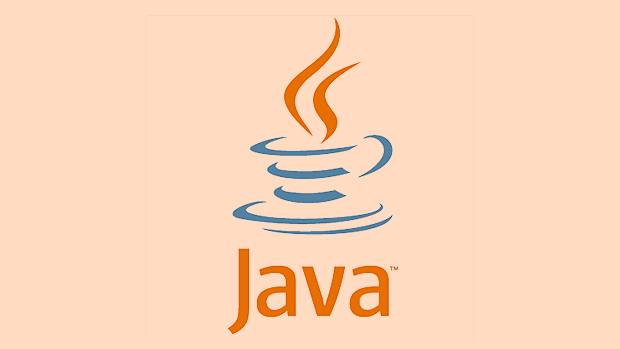Surviving the Java Coding Interview: Data Structures and Algorithms
Jul 23, 2025 am 03:46 AMMaster the core data structure and its applicable scenarios, such as the selection of HashMap and TreeMap, and the expansion mechanism of ArrayList; 2. Practice algorithms from the Java perspective, proficient in double pointer, sliding window, DFS/BFS and other modes and can be clearly implemented; 3. Write clean and robust Java code, focusing on naming, boundary processing and language features (such as generics and final); 4. Prepare the practical question of "why use Java" and understand the impact of StringBuilder, GC, etc. on performance; maintain practice and clear expression to stand out.

Landing a job at a top tech company often hinges on how well you handle the Java coding interview—especially the data structures and algorithms (DSA) portion. It's not just about knowing syntax; it's about solving problems efficiently, writing clean code, and thinking aloud while you do it.

Here's how to survive—and even thrive—in that high-pressure environment:
1. Master the Core Data Structures (and When to Use Them)
You won't get far if you can't explain why you'd choose a HashMap over a TreeMap , or when a LinkedList beats an ArrayList .

Key Java structures to know cold:
- Arrays & ArrayLists : Know time complexity for access, insertion, deletion. Understand how resizing works in
ArrayList. - HashMap / LinkedHashMap / TreeMap : Be ready to discuss hash collisions, load factor, and when to use each. Know that
HashMapis O(1) average case for get/put—but worst case O(n). - Stacks & Queues : Use
Dequein Java (ArrayDeque) for both. Know how to simulate recursion with a stack. - Heaps (PriorityQueue) : Crucial for top-K problems, Dijkstra's algorithm. Remember it's a min-heap by default in Java.
- Trees (especially Binary Trees & BSTs) : Recursive traversal patterns (pre/in/post-order), iterative versions using stacks, and how to validate a BST.
? Pro tip: Don't just memorize—implement a simple LRU cache using
LinkedHashMapor a min-heap from scratch. That kind of depth separates juniors from seniors.
2. Practice Algorithms with a Java Lens
It's not enough to know how to do binary search—you need to write it cleanly in Java, handle edge cases ( low vs <code>low ), and talk about <code>Arrays.binarySearch() vs your own version.
Top algorithm patterns to drill:
- Two Pointers (eg, remove duplicates from sorted array)
- Sliding Window (max sum of subarray of size k)
- Fast & Slow Pointers (detect cycle in linked list)
- DFS/BFS on trees and graphs (use
Queuefor BFS,Stackor recursion for DFS) - Dynamic Programming (start with memoized recursion, then optimize to tabulation)
- Backtracking (think subsets, permutations)
? Interviewers care more about your approach than perfection. Talk through brute force → optimize → edge cases. Example:
“First, I'll solve this with O(n2) nested loops—then see if sorting or a HashMap helps reduce it to O(n).”
3. Write Clean, Production-Ready Java Code
Interviewers want code that's readable, handles edge cases, and uses Java idioms—not just working code.
What they look for:
- Good variable names (
left,rightfor points—noti,j) - Early returns for edge cases (
if (root == null) return 0;) - Proper use of generics (
List<string></string>not rawList) - Avoiding
==for String comparison (equals()instead) - Using
finalwhen appropriate (eg, for method parameters you won't reassign)
? Example:
public int findPeakElement(int[] nums) { if (nums == null || nums.length == 0) return -1; int left = 0, right = nums.length - 1; while (left < right) { int mid = left (right - left) / 2; if (nums[mid] > nums[mid 1]) { right = mid; } else { left = mid 1; } } return left; }
4. Handle the “Why Java?” Questions
Expect questions like:
- “Why use
StringBuilderinstead of string concatenation in a loop?” - “What's the difference between
ArrayListandLinkedListin practice?” - “How does garbage collection affect performance in long-running algorithms?”
These test your real-world Java fluency—not just DSA theory.
Final Advice
- Practice on a whiteboard or CoderPad : Typing without IDE autocomplete forces clarity.
- Explain as you code : Interviewers assessment communication as much as correctness.
- Review common mistakes : Off-by-one errors, null pointer exceptions, infinite loops in binary search.
Surviving the Java coding interview isn't about being perfect—it's about being prepared, thoughtful, and clear. Nail the fundamentals, and you'll stand out.
Basically, just keep coding.
The above is the detailed content of Surviving the Java Coding Interview: Data Structures and Algorithms. For more information, please follow other related articles on the PHP Chinese website!

Hot AI Tools

Undress AI Tool
Undress images for free

Undresser.AI Undress
AI-powered app for creating realistic nude photos

AI Clothes Remover
Online AI tool for removing clothes from photos.

Clothoff.io
AI clothes remover

Video Face Swap
Swap faces in any video effortlessly with our completely free AI face swap tool!

Hot Article

Hot Tools

Notepad++7.3.1
Easy-to-use and free code editor

SublimeText3 Chinese version
Chinese version, very easy to use

Zend Studio 13.0.1
Powerful PHP integrated development environment

Dreamweaver CS6
Visual web development tools

SublimeText3 Mac version
God-level code editing software (SublimeText3)
 VSCode settings.json location
Aug 01, 2025 am 06:12 AM
VSCode settings.json location
Aug 01, 2025 am 06:12 AM
The settings.json file is located in the user-level or workspace-level path and is used to customize VSCode settings. 1. User-level path: Windows is C:\Users\\AppData\Roaming\Code\User\settings.json, macOS is /Users//Library/ApplicationSupport/Code/User/settings.json, Linux is /home//.config/Code/User/settings.json; 2. Workspace-level path: .vscode/settings in the project root directory
 How to handle transactions in Java with JDBC?
Aug 02, 2025 pm 12:29 PM
How to handle transactions in Java with JDBC?
Aug 02, 2025 pm 12:29 PM
To correctly handle JDBC transactions, you must first turn off the automatic commit mode, then perform multiple operations, and finally commit or rollback according to the results; 1. Call conn.setAutoCommit(false) to start the transaction; 2. Execute multiple SQL operations, such as INSERT and UPDATE; 3. Call conn.commit() if all operations are successful, and call conn.rollback() if an exception occurs to ensure data consistency; at the same time, try-with-resources should be used to manage resources, properly handle exceptions and close connections to avoid connection leakage; in addition, it is recommended to use connection pools and set save points to achieve partial rollback, and keep transactions as short as possible to improve performance.
 Mastering Dependency Injection in Java with Spring and Guice
Aug 01, 2025 am 05:53 AM
Mastering Dependency Injection in Java with Spring and Guice
Aug 01, 2025 am 05:53 AM
DependencyInjection(DI)isadesignpatternwhereobjectsreceivedependenciesexternally,promotingloosecouplingandeasiertestingthroughconstructor,setter,orfieldinjection.2.SpringFrameworkusesannotationslike@Component,@Service,and@AutowiredwithJava-basedconfi
 How to work with Calendar in Java?
Aug 02, 2025 am 02:38 AM
How to work with Calendar in Java?
Aug 02, 2025 am 02:38 AM
Use classes in the java.time package to replace the old Date and Calendar classes; 2. Get the current date and time through LocalDate, LocalDateTime and LocalTime; 3. Create a specific date and time using the of() method; 4. Use the plus/minus method to immutably increase and decrease the time; 5. Use ZonedDateTime and ZoneId to process the time zone; 6. Format and parse date strings through DateTimeFormatter; 7. Use Instant to be compatible with the old date types when necessary; date processing in modern Java should give priority to using java.timeAPI, which provides clear, immutable and linear
 Understanding the Java Virtual Machine (JVM) Internals
Aug 01, 2025 am 06:31 AM
Understanding the Java Virtual Machine (JVM) Internals
Aug 01, 2025 am 06:31 AM
TheJVMenablesJava’s"writeonce,runanywhere"capabilitybyexecutingbytecodethroughfourmaincomponents:1.TheClassLoaderSubsystemloads,links,andinitializes.classfilesusingbootstrap,extension,andapplicationclassloaders,ensuringsecureandlazyclassloa
 Google Chrome cannot open local files
Aug 01, 2025 am 05:24 AM
Google Chrome cannot open local files
Aug 01, 2025 am 05:24 AM
ChromecanopenlocalfileslikeHTMLandPDFsbyusing"Openfile"ordraggingthemintothebrowser;ensuretheaddressstartswithfile:///;2.SecurityrestrictionsblockAJAX,localStorage,andcross-folderaccessonfile://;usealocalserverlikepython-mhttp.server8000tor
 Comparing Java Frameworks: Spring Boot vs Quarkus vs Micronaut
Aug 04, 2025 pm 12:48 PM
Comparing Java Frameworks: Spring Boot vs Quarkus vs Micronaut
Aug 04, 2025 pm 12:48 PM
Pre-formanceTartuptimeMoryusage, Quarkusandmicronautleadduetocompile-Timeprocessingandgraalvsupport, Withquarkusoftenperforminglightbetterine ServerLess scenarios.2.Thyvelopecosyste,
 Understanding Network Ports and Firewalls
Aug 01, 2025 am 06:40 AM
Understanding Network Ports and Firewalls
Aug 01, 2025 am 06:40 AM
Networkportsandfirewallsworktogethertoenablecommunicationwhileensuringsecurity.1.Networkportsarevirtualendpointsnumbered0–65535,withwell-knownportslike80(HTTP),443(HTTPS),22(SSH),and25(SMTP)identifyingspecificservices.2.PortsoperateoverTCP(reliable,c







